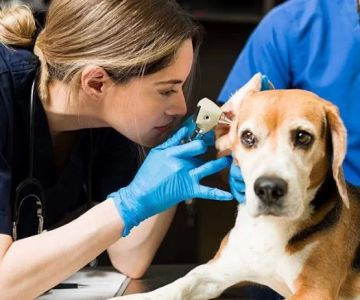- 1-what-are-veterinary-oximeters
- 2-differences-between-vet-and-human-oximeters
- 3-accuracy-of-veterinary-oximeters-for-human-use
- 4-real-world-experiences-using-vet-oximeters-on-people
- 5-considerations-when-using-veterinary-oximeters-on-humans
- 6-advantages-and-limitations-of-vet-oximeters
- 7-where-to-find-trusted-oximeter-products
1. What Are Veterinary Oximeters?
Veterinary oximeters are devices designed to measure oxygen saturation and pulse rate in animals. They often feature sensors tailored to various animal sizes and anatomies, from small pets to large livestock. These devices are critical in monitoring anesthesia, respiratory function, and general health during veterinary care.
While similar in function to human pulse oximeters, veterinary versions may differ in sensor design and calibration to accommodate the unique physiological characteristics of animals.
2. Differences Between Vet and Human Oximeters
Human pulse oximeters are optimized for fingers and earlobes, focusing on smaller, more uniform body parts. Veterinary oximeters come with a wider variety of probes designed to fit different animal appendages such as tongues, paws, or tails.
Moreover, veterinary models may offer more rugged construction to endure clinical environments with animals. Calibration algorithms may also differ to account for species-specific blood characteristics.
3. Accuracy of Veterinary Oximeters for Human Use
Research and anecdotal evidence suggest that veterinary oximeters can provide reasonably accurate readings when used on humans, especially in non-critical situations. However, accuracy can vary depending on sensor fit and the model used.
Human pulse oximeters generally provide more precise measurements due to their design focus, but veterinary devices can be a practical alternative when human-specific models are unavailable.
4. Real-World Experiences Using Vet Oximeters on People
Many users have reported successfully using veterinary oximeters for personal monitoring, noting adequate pulse and oxygen saturation readings. For instance, athletes or outdoor enthusiasts have turned to veterinary models for their durability and cost-effectiveness.
Nevertheless, some healthcare professionals advise caution, especially for medical diagnoses, emphasizing that veterinary oximeters are not a substitute for certified human medical devices.
5. Considerations When Using Veterinary Oximeters on Humans
If opting to use a veterinary oximeter on people, it’s important to ensure proper sensor placement and verify readings with clinical equipment when possible. Users should be aware of limitations such as potential inaccuracies with movement, skin pigmentation, or poor circulation.
Understanding these factors helps avoid misinterpretation of results and ensures safe monitoring practices.
6. Advantages and Limitations of Vet Oximeters
Advantages of veterinary oximeters include versatility across species, ruggedness, and often lower cost compared to some human medical-grade devices. They can serve as reliable tools for general wellness checks and monitoring in field conditions.
Limitations include potential reduced accuracy for humans, less user-friendly interfaces, and lack of regulatory approval for human medical use. Knowing these pros and cons aids in making an informed decision.
7. Where to Find Trusted Oximeter Products
For those interested in exploring reliable oximeter devices, including options suitable for both veterinary and human monitoring, trusted suppliers and expert reviews are invaluable. Scent Snob offers a selection of high-quality health monitoring tools with detailed guidance to help you choose the right product.
Exploring Scent Snob’s curated collection ensures access to dependable oximeters, enabling accurate and convenient health tracking.












